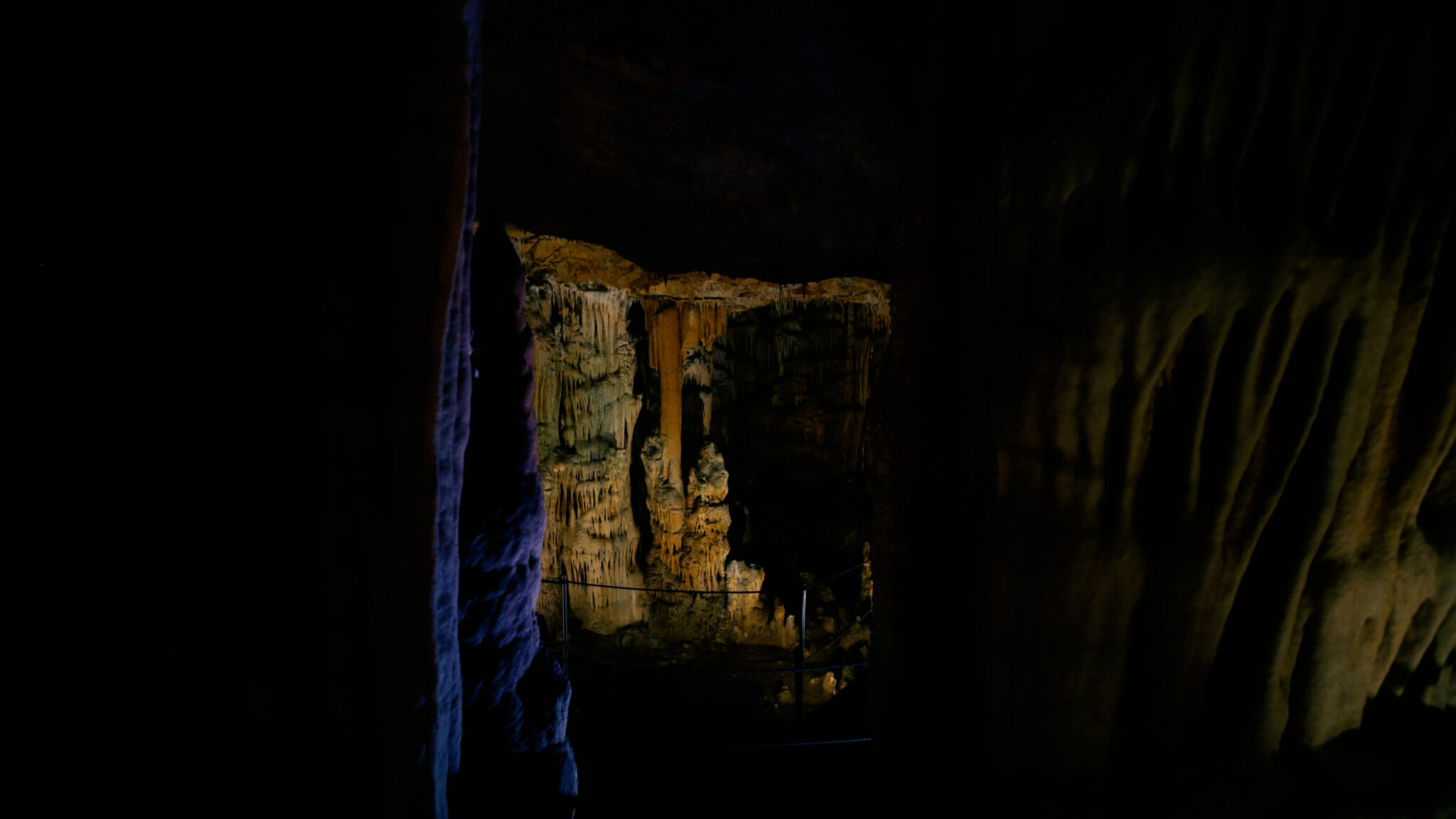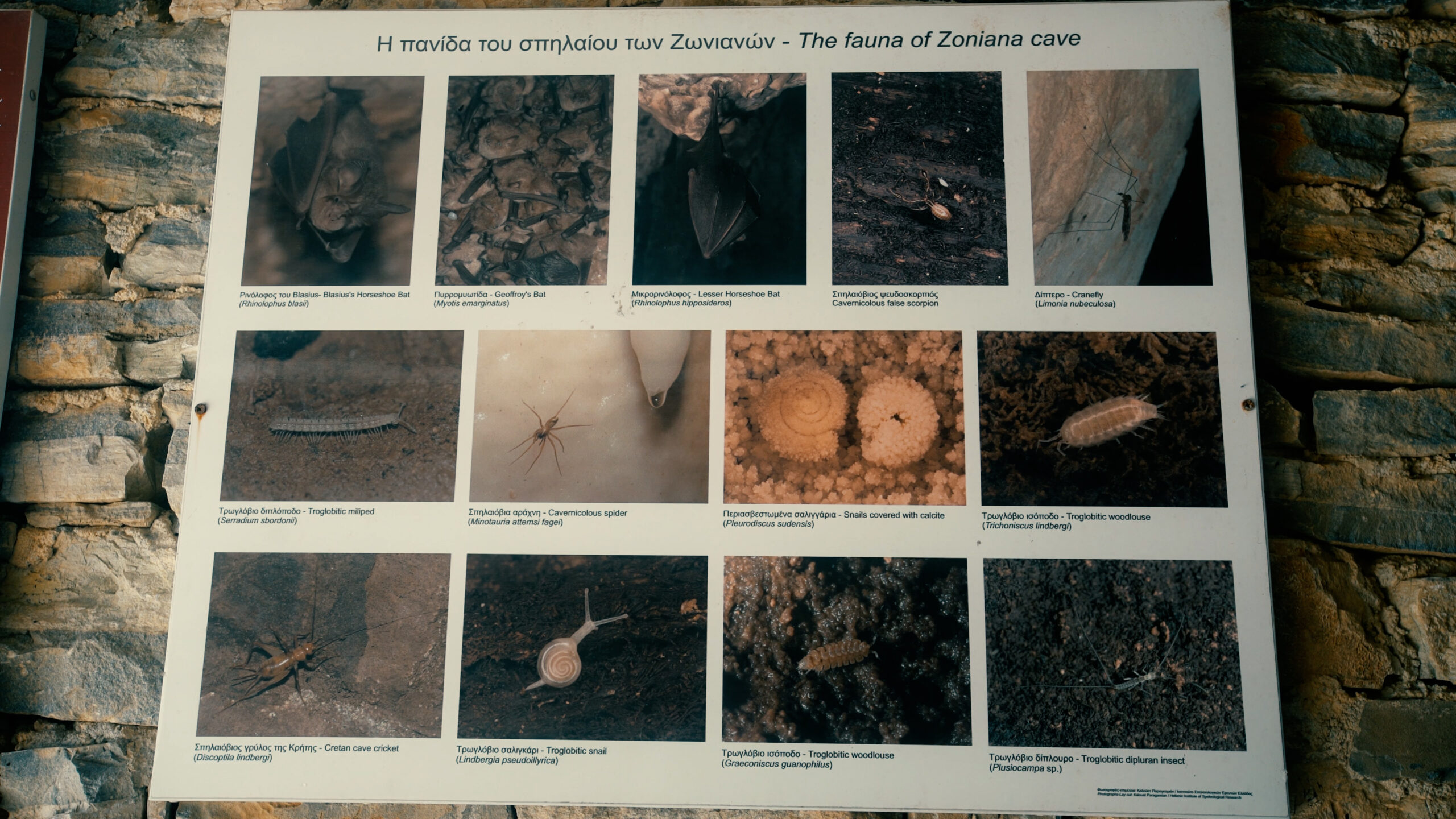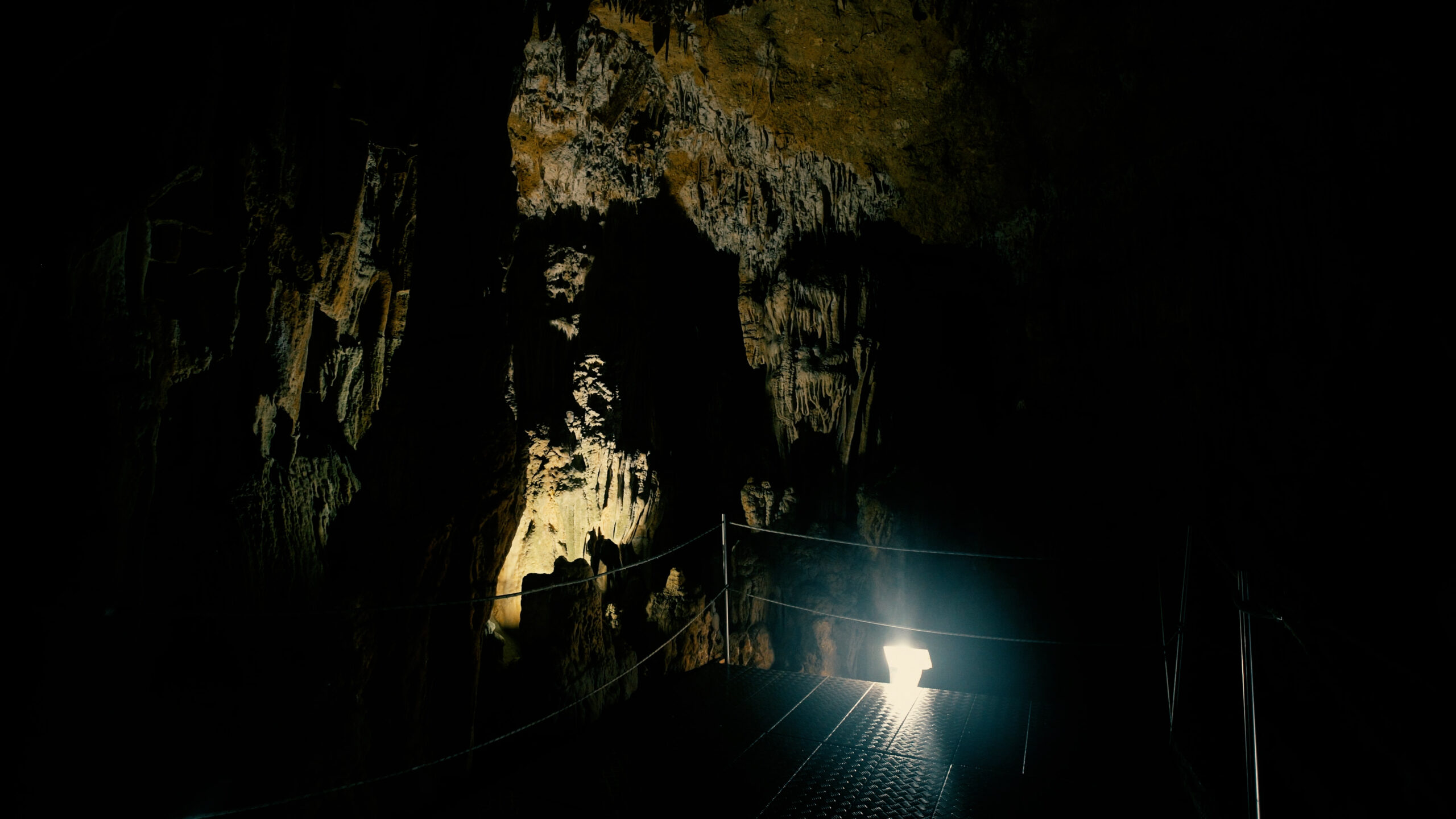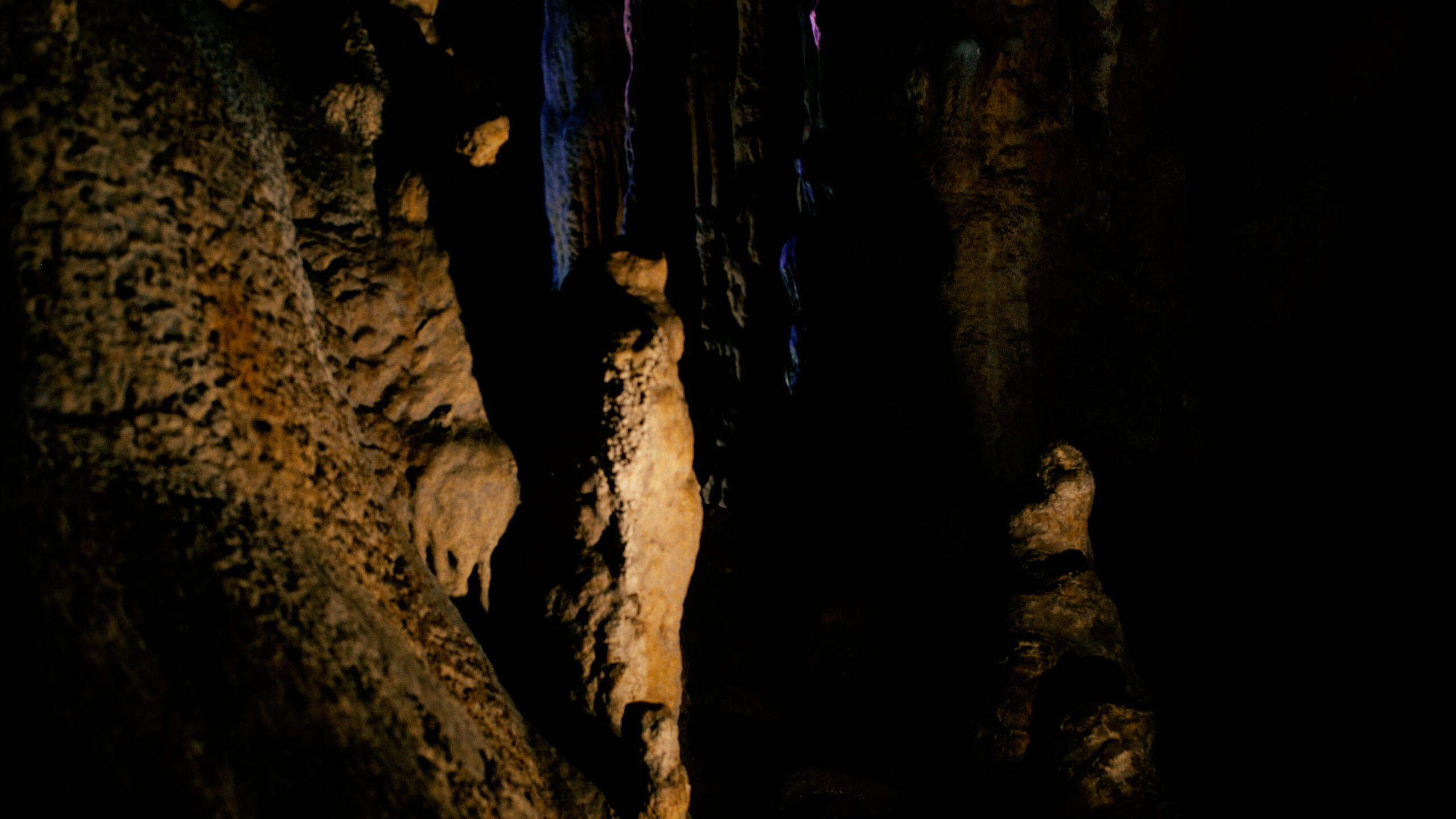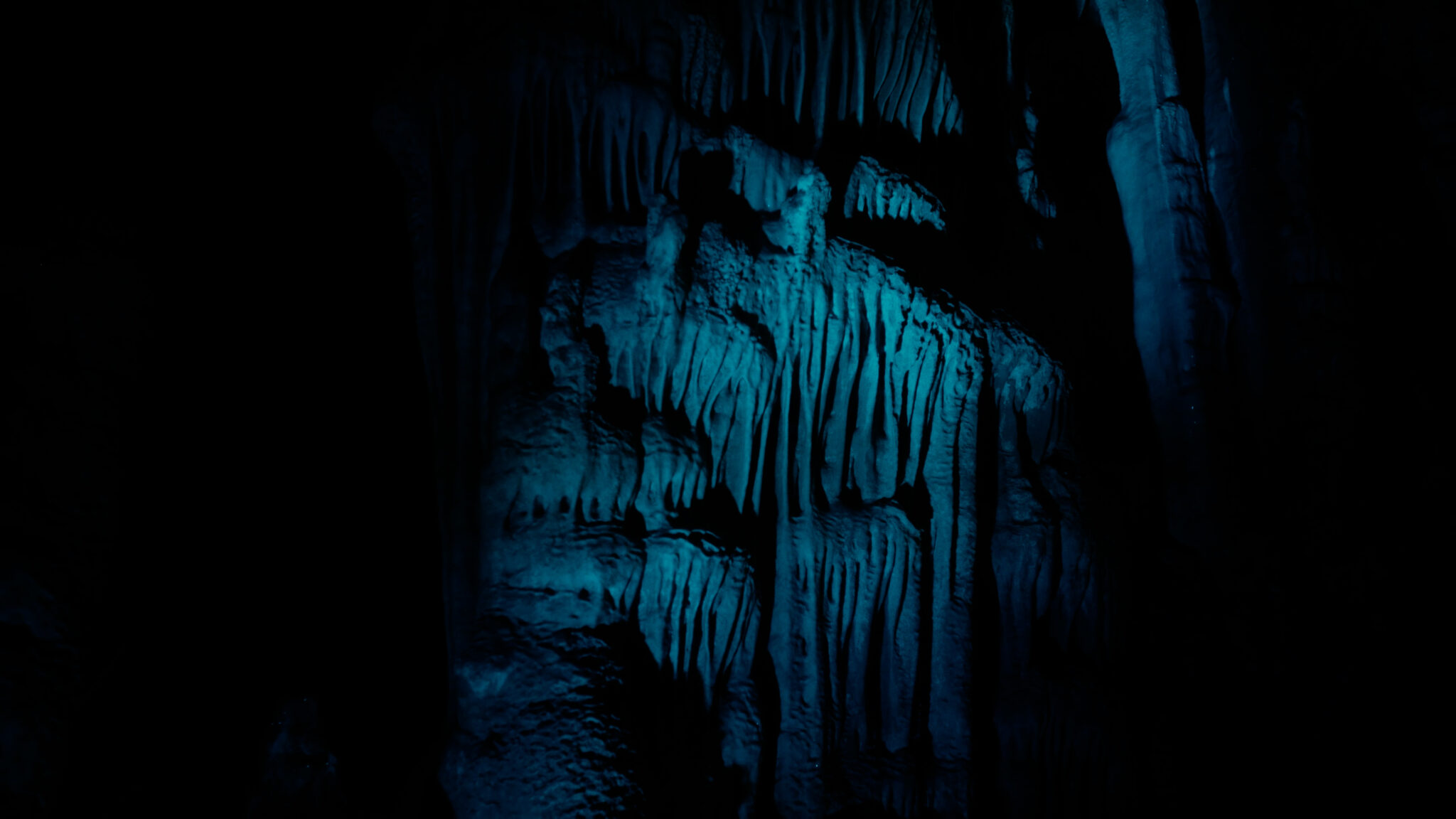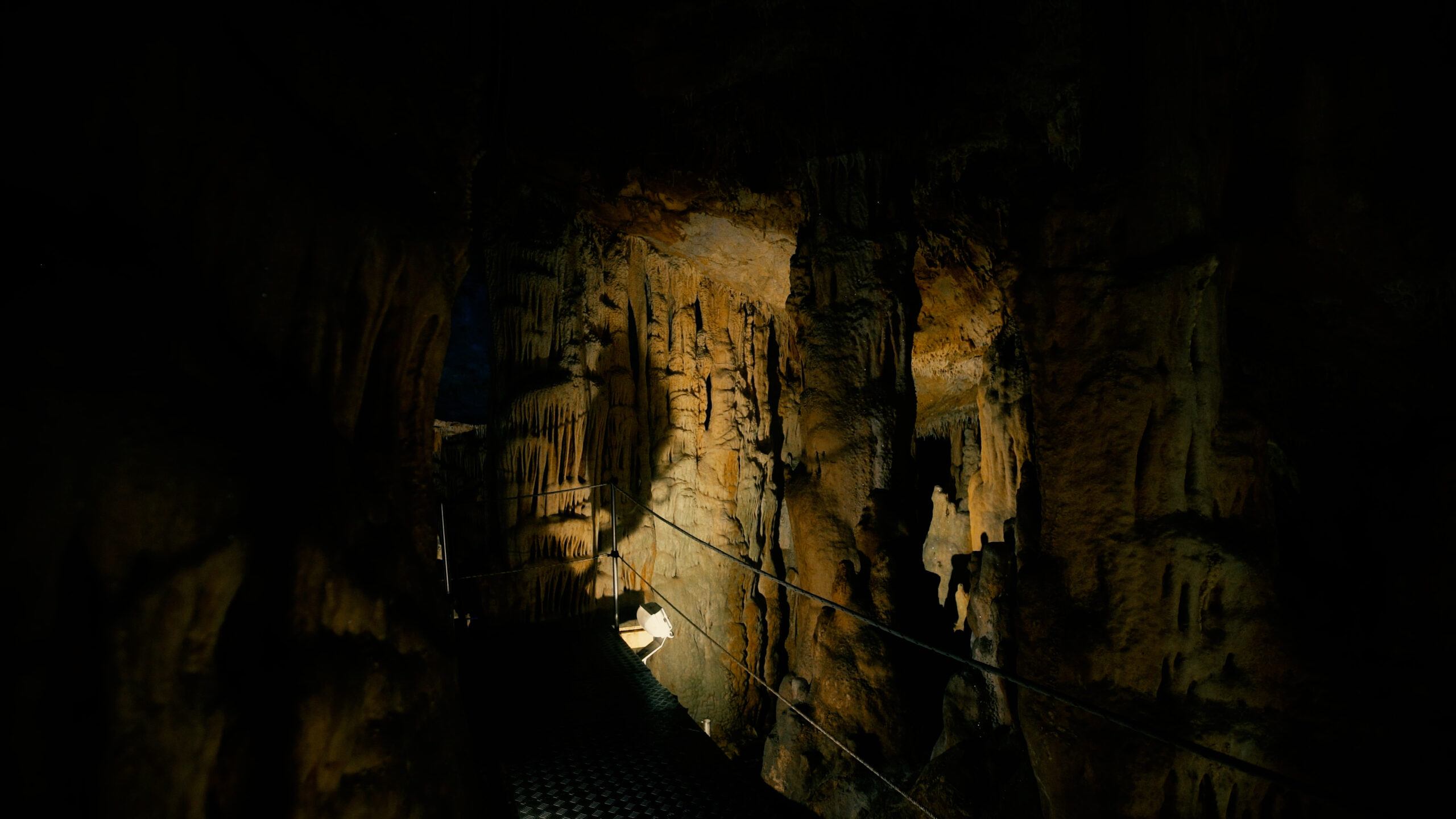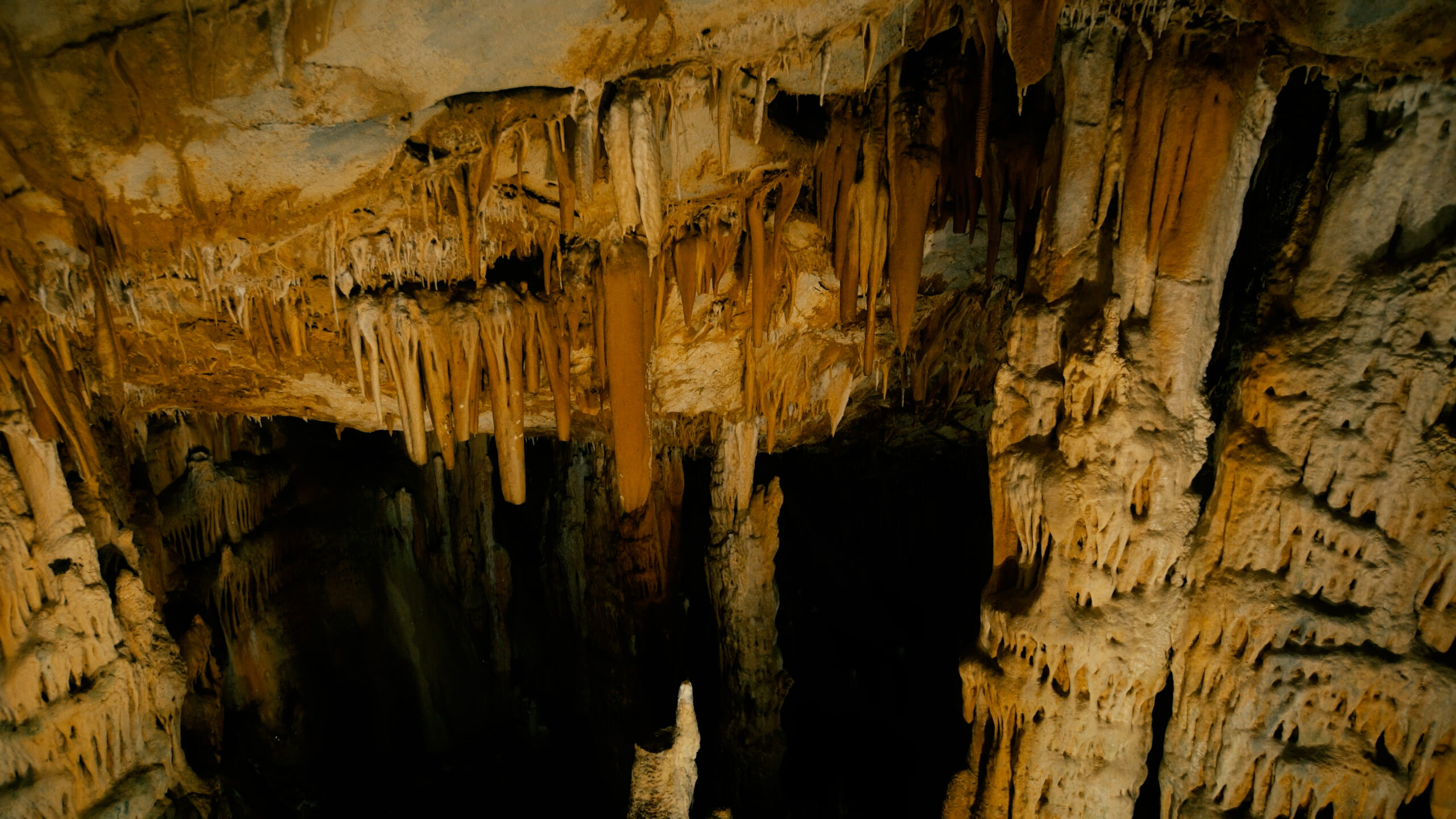One of the most beautiful and largest caves in Greece is the cave of Zonians. The name of the cave is Sedonis or Sphendoni or “the hole of Sphentoni”. It is an archaeological site. The Sedoni cave is located on the eastern slope of the Halepa hill and in the location of Skafidaia, near the spring of the same name, at a distance of 500m, NE of Zonians and at an altitude of 630m. It is also very close to the archaeological sites of Idaios Andros, Zominthos and Axos. It was explored and mapped in 1963 by E.S.E. (Hellenic Speleological Society) under the direction of Anna Petroheilou.
In 1987, the KE’Ephorate of Prehistoric and Classical Antiquities carried out rescue excavation research in the vestibule and the first two chambers of the cave. The finds that came to light prove sporadic human settlement during the Late Neolithic and Early Bronze Age (Proto-Minoan I – IIA period, 3500 – 2300 BC) as well as human presence in the Late Roman period as evidenced by a coin of the 4th c. A.D.
The study of the zooarchaeological material of the Prehistoric times indicated breeding mainly of sheep and goats, cattle, as well as wild mammals deer and roe deer. Vertical slopes of up to 50m rise to the NW of the cave. In the crevices of the rocks grow thyme, sedum, oregano and other characteristic plants of the Cretan flora.
The entrance to the cave is through an opening measuring 1m wide and 1.5m high. It is a fairly large cave, with many chambers. The maximum length in a straight line is 145m. It occupies an area of approximately 3,000 sq.m. Its chambers are characterized by rich and impressive decoration such as huge pillars that form walls and labyrinthine passages, magnificent clusters of imposing pillar and stalagmite complexes, stone water basins with “cave pearls”. “Cave pearls” are limestone conglomerates that grow in shallow cave lakes. They are usually spherical and very often contain a core of some foreign body such as a grain of sand. The cave rooms have colorful drip and stalagmite decoration. The sparkle of tiny calcium carbonate crystals in many of the cave’s rocks is characteristic.
Four species of bats and dozens of invertebrates, endemic to the island and perfectly adapted to the dark, live in the cave today.
The most important of these are isopods, pseudoscorpions, diplopods, diplurae and snails. Among them is the tiny troglodyte isopod Graeconiscus Guanophilus, which lives only in this particular cave. The cave has long been known to the inhabitants of the area. In difficult times it was a refuge for persecuted and rebels. According to tradition, the name of the cave came from a Sfakian chaine (guerrilla) Sfentonis, who had taken refuge in the cave and was forced to kill a young man who asked him for food, in order to protect his hiding place. Today, the cave is utilized and can be visited during 2/3 of it, while the special tour path allows a safe visit to the cave for people with special needs.
